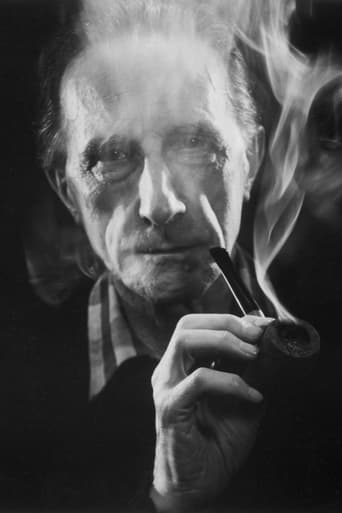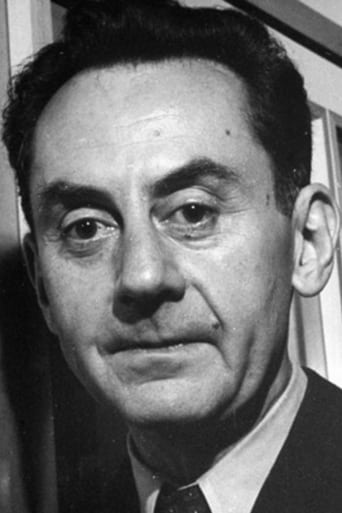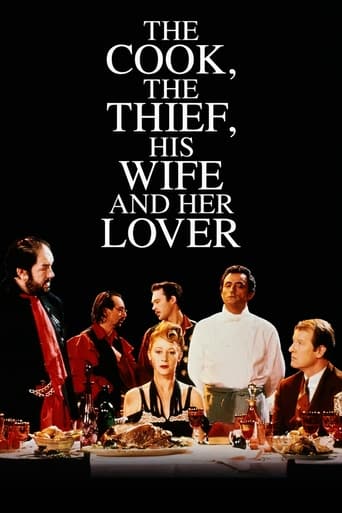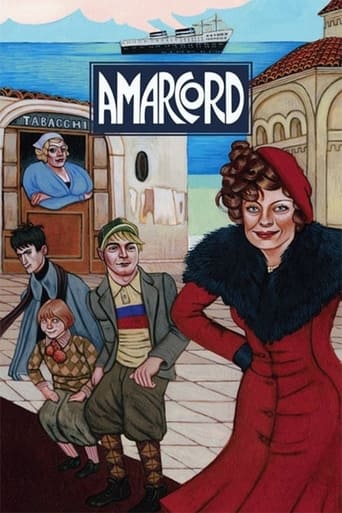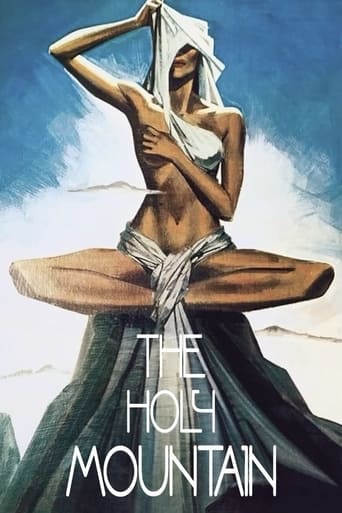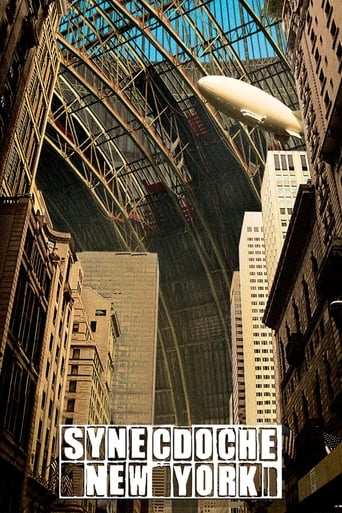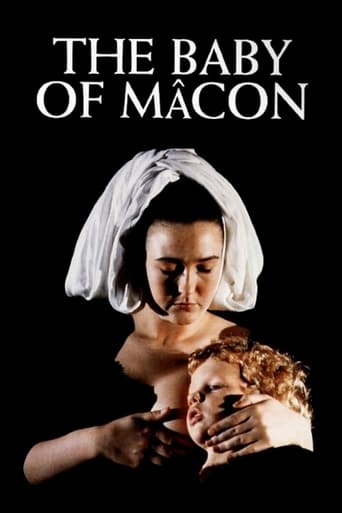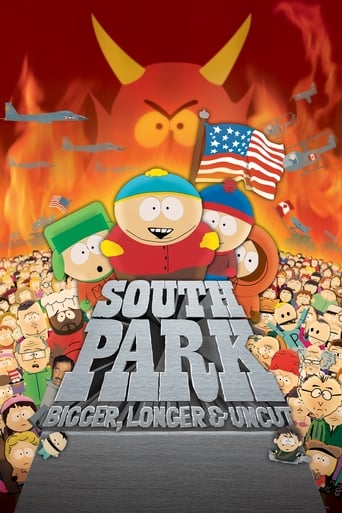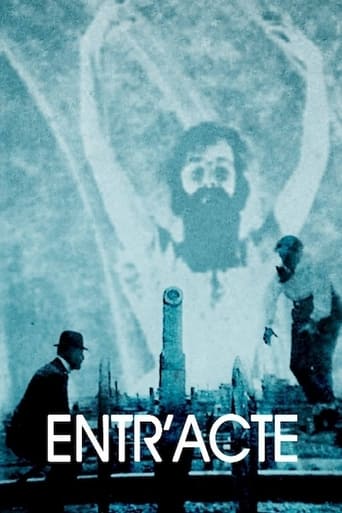
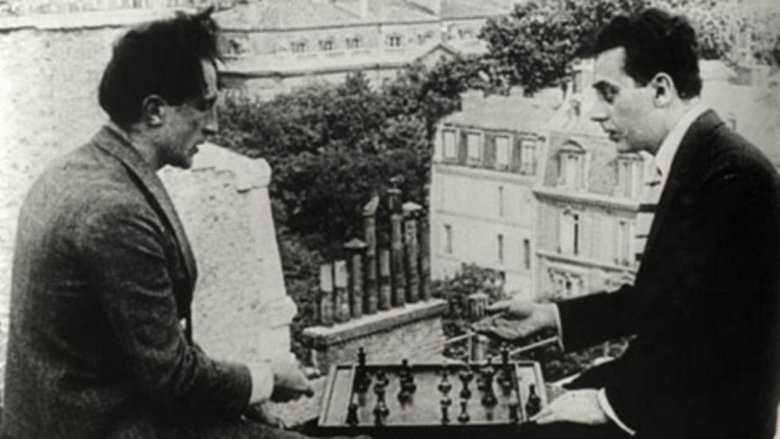
Entr'acte (1924)
Stop-motion photography blends with extreme slow-motion in Clair's first and most 'dada' film, composed of a series of zany, interconnected scenes. We witness a rooftop chess match between Marcel Duchamp and Man Ray, a hearse pulled by a camel (and chased by its pallbearers) and a dizzying roller coaster finale. A film of contradictions and agreements.
Watch Trailer
Cast
Similar titles
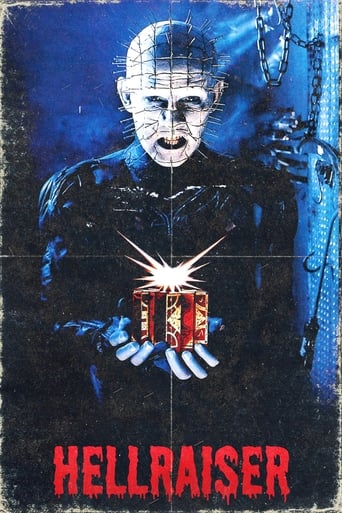
Reviews
To me, this movie is perfection.
Pretty Good
Don't listen to the negative reviews
There are better movies of two hours length. I loved the actress'performance.
René Clair's "Entr'acte" is one of the pioneering films of the surrealist genre in cinema, which, from what I gather, is the attempt at bending reality and twisting all that we've come to know into something deeply strange but entirely mesmerizing. Heavy on its use of perverse or unique imagery and juxtaposition of images and sequences and frequently rejecting the conventions of linear, dramatic filmmaking, such surrealist filmmakers today, such as Quentin Dupieux and Terry Gilliam, focus on a wide-range or visual styles in addition to wacky, out-there humor that is sometimes funny because it doesn't make a bit of sense (otherwise known as "anti-humor").When it comes to "Entr'acte," however, we have an intriguing piece of film on our hands, one that serves as an early film of the "dadaism" movement in art, where European artists, writers, poets, filmmakers, and theorists began to reject commonly- utilized devices in art of the time in favor of a more radical approach to their mediums. These often included the injection of leftist policies and believes, most specifically anti-war policies that began hitting their stride as World War II neared.Just by watching the first few minutes of "Entr'acte," one can see that it has no desire at all to try and fit in with conventional artistic standards. It serves as a conglomerate of visuals from the dadaist period, many of which not making very much sense, but each provoking a genre-bending fascination amongst the audience. The opening scene itself is something to marvel at, showing two people firing a cannon from the top of a large building, while strangely-calming and infectious music is played in the background.The film persists on, with numerous different visuals that were likely never before seen outside of this particular work. What's remarkable is that despite the film's age, scenes involving characters running in slow motion and then being sped up into running in fast-motion after a vehicle still hold a certain kind of power to them. Overall, there's a mesmerizing quality "Entr'acte" bears that is surprising to note seeing as it perfectly defines a film that was "the first of its kind."Directed by: René Clair.
Surrealism was officially born in 1924, with the publishing of André Breton's Surrealist Manifesto. So it's quite possibly that René Clair's short movie of the same year may be the first cinematic expression of surrealism, preceding Luis Buñuel's An Andaluzian Dog by a few years.Working with a screenplay by Francis Picabia, a Dada/surrealist artist, Clair's movie is much in line with Buñuel's future movie. At times it's a collage and juxtaposition of disconnected images; but it has a story in it, about a coffin that runs away from a procession, forcing a mob to chase it.It's an entertainment, but for me it's not a great work of cinema. It's not as good as Clair's next movie, The Imaginary Voyage, for instance. Perhaps it has value for scholars of film history, but I don't see it as a movie that has stood the test of time, like Fritz Lang's 1921 movie, Destiny, which seems fresh and engaging still.
I just saw Entr'acte another time and I kept asking myself what was the meaning of this picture? I couldn't find any meaning in it: men running in slow motion, a roller-coaster ride, a lot of unclear images with movement, ... so maybe it is about movement? maybe there isn't any meaning at all, with the only meaning that life goes slow fast and normal at the same time, it depends on how you look at things. and how you look at things, is influenced by the feeling that you have on that particular moment. so maybe, if there is any meaning in the film, it's the message that we experience life as we want it to be. if we have fun, it goes fast. if we are bored, it goes slow. if we don't care, it goes on at a normal tempo.
Originally played as an intermission with no sound, this film is now a must for any fan/historian of fine art. Featuring cameos by Man Ray, Marcel Duchamp, and other notables, Clair and Picabia's dada collage of different narratives, experimental use of the camera, and surrealist and absurdist images is the best example of experimental or dadaist films from the period. As unusual as it is to watch a film with no sound, the images created by the artists provide an extremely unique experience for the viewer. Fun for anyone, and especially interesting for those acquainted with the artists or the art movements themselves.
